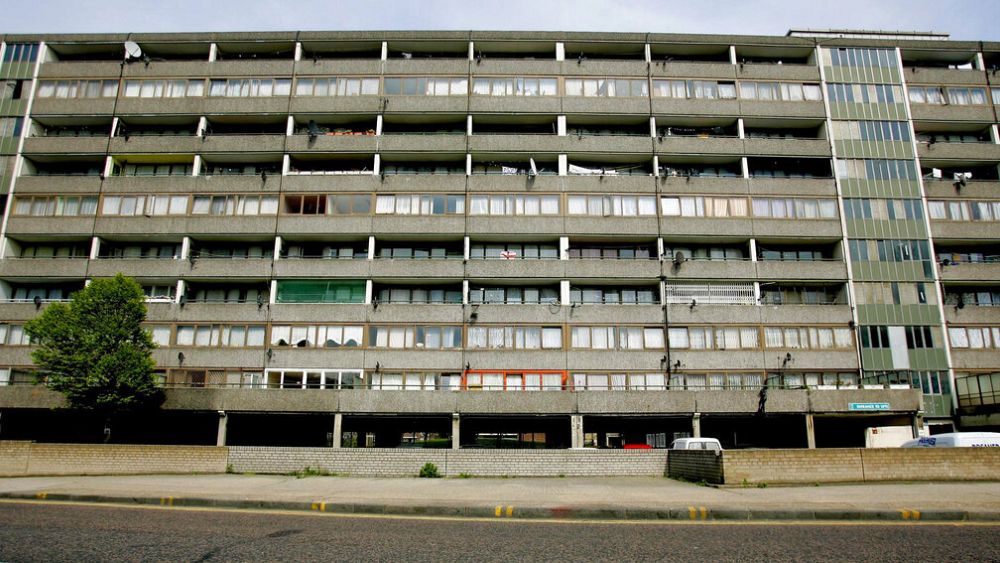
When Patrica Roman lost her job as a cleaner, her life turned upside down.
She and her three children – aged 5, 9 and 15 – were evicted from their home in Lambeth, central London, last autumn, and faced the prospect of sleeping on the streets, had the local authority not intervened and placed them in emergency housing.
On top of this first crisis, another was soon piled on.
The family was housed in a freezing, cramped flat, nearly 60km away from their community and support network.
Now, during important exams, her eldest son must commute five hours a day across central London to go to school – often falling asleep in class he’s so tired from the 5:00am start – while Patrica has struggled to find a job in an unfamiliar area.
“It’s caused stress, insomnia and anxiety,” she told Euronews, desparing at the situation.

‘Anyone can become homeless’
Patrica and her family are not alone.
According to the UK government, some 95,000 households were considered homeless and needed temporary accommodation at the end of June 2022, of which more than half were in London.
This included 121,000 children in England alone.
Under British law, if a family or vulnerable adult is made homeless then their local authority is legally obligated to put them in temporary accommodation.
Temporary accommodation comes in many forms. Yet people are most often packed into poor quality, unsuitable housing, such as emergency hostels, B&Bs, one-room bedsits and shipping containers.
“This accommodation is at the very worst end,” Liz Wyatt of the campaign group Housing Action Southwark and Lambeth told Euronews. “They are often dilapidated, overcrowded and in a very poor state.”
“Its really dangerous, shoddy, depressing, tiny, rabbit hutch living conditions,” she added.
At least 34 homeless children have died unexpectedly in temporary housing since 2019, according to a study by University College London (UCL).
One particular issue is damp and mould inside homes, which is linked to several health problems in children.
Speaking to the i newspaper, Professor Monica Lakhanpaul said: “Children are at risk of breathing problems such as respiratory infections and asthma, as well as diarrhoea and skin problems because of the conditions they are in – mould, overcrowding, poor ventilation and pollution.”
‘Forever accommodation’
As its name suggests, temporary accommodation is not designed to be lived in permanently and families can be asked to move numerous times a short notice.
At the mercy of the local authority, Wyatt says families face “constant insecurity” that is “highly disruptive”, pointing to cases of children moving schools four times.
Studies show that moving schools can have a devastating impact on kids, badly impacting their achievement and ability to form social and neighbourhood relationships.
“There’s unimaginable suffering,” Wyatt told Euronews. “Temporary accommodation is really, really harmful both for mental and physical health.”
“Children suffer anxiety, stress and depression because they’re always worried that they’re going to have to move home at a moments notice and change school.”
She continued: “The crisis in temporary accommodation at this very movement is reaching devastating new heights.”
“The level of suffering is something we have never seen before.”
In January 2022, Human Rights Watch blasted the UK government, claiming “substandard and uninhabitable” temporary accommodation was violating children’s rights.
“Every child deserves a stable and decent home as a foundation to succeed in education,” it said in a statement, highlighting that much temporary accommodation lacks quiet spaces for children to study or a wifi-connection.
The number of families in temporary accommodation inched down 1% in June 2022, compared to the previous year, according to government figures. This follows year-on-year increased since 2011 – one year after the Conservative-Liberal Democratic collation took over.
Over the last decade, Wyatt told Euronews the term temporary had lost its “real meaning”, with families and vulnerable adults trapped in terrible housing for years, even decades.
And this harm does not fall evenly.
Migrant families and people of colour often experience the “worst treatment” by local authorities because they do not know their rights or have trouble enforcing them as English is not their first language, she said.
‘The bitter end of the housing crisis’
A toxic cocktail of crises are to blame for the temporary accommodation epidemic.
Property prices – especially in the capital – have soared in recent decades, while the Conservative government has slashed local authorities’ budgets.
Stagnating wages and austerity-driven benefit cuts have also pushed more people than ever into homelessness.
For Wyatt, a “desperate shortage of council housing” was turbo-charging the crisis, hamstringing local authorities’ ability to house people and forcing them to use their limited budgets on unaffordable private homes.
In the 1980s, former Prime Minister Margaret Thatcher sold off huge swathes of social housing in a highly controversial scheme called right to buy.
Critics say the policy fuelled a housing crisis, forced millions of mostly younger people into grotty, overpriced accommodation; defenders say it fostered self-reliance, independence and a ‘property-owning’ democracy.
Since then, successive governments have been criticised for not building enough council homes and replacing lost stock.
In 1979, there were 6.5m council homes. Today, there are 2.2m, while 4.4m households rent privately, twice as many as 15 years ago.
“The housing crisis is a political choice”, said Wyatt. “It is possible to make sure everyone has a safe and secure home, if the government wants to.”
“Anybody could find themselves homeless.”



